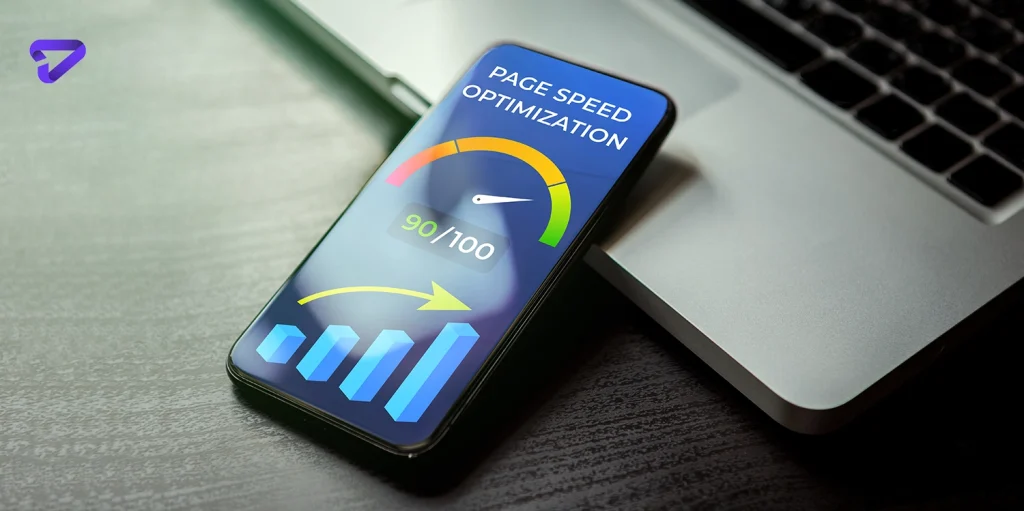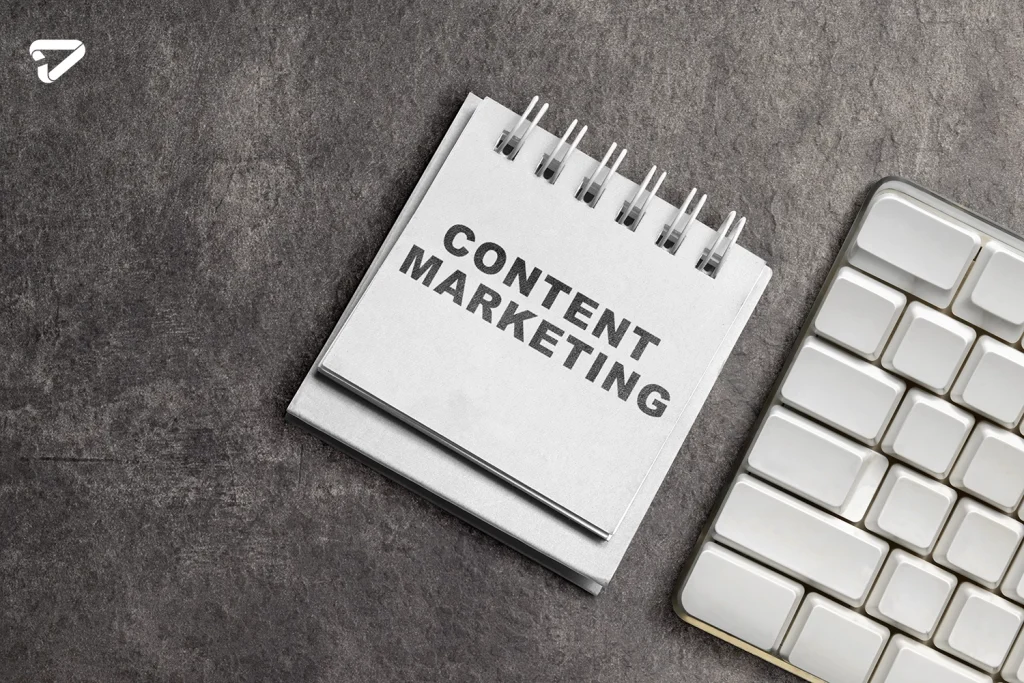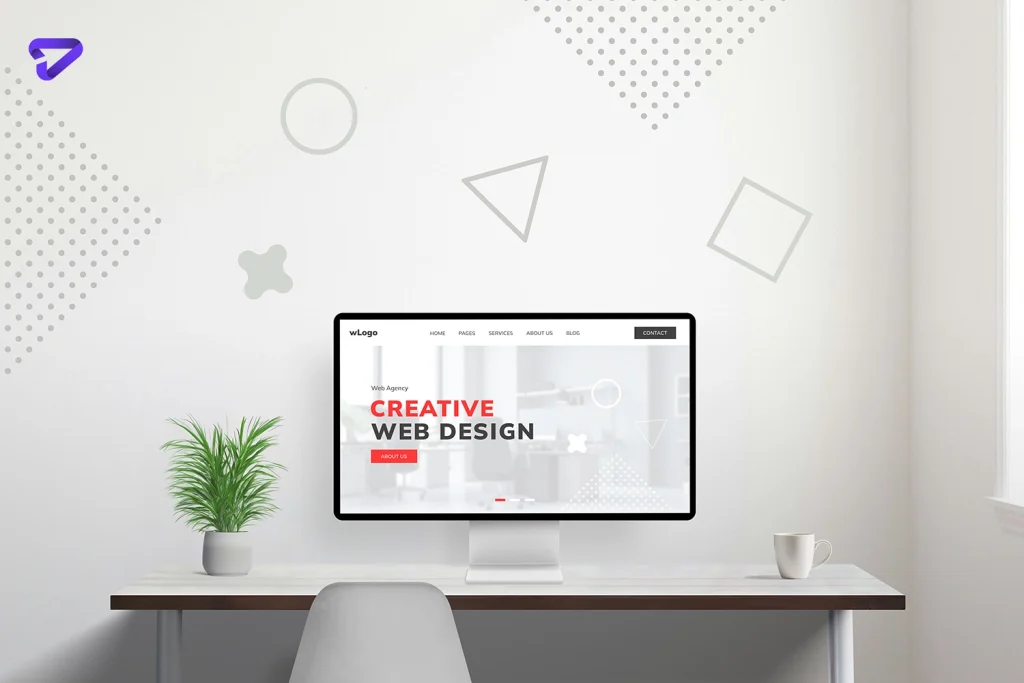How Web Design Impacts Content Marketing
Web design impacts content marketing by creating an intuitive user experience that retains visitors, encourages content sharing, and improves overall search engine rankings.
Web design and content marketing are two sides of the same coin.
While high-quality content is essential to attract and retain your audience, a well-designed website ensures that this content is accessible, engaging, and easy to navigate.
In this blog post, we will delve into the intricate relationship between web design and content marketing.
We will explore how good design enhances user experience, increases engagement, and ultimately boosts the effectiveness of your content marketing efforts.
The Role of Web Design in Content Marketing
Web design plays a pivotal role in content marketing. It encompasses the layout, visual elements, and overall aesthetic of a website.
A well-designed website can significantly enhance the delivery of content and improve user interaction.
Here are some key points to consider:
1- First Impressions Matter: The design of your website is often the first thing visitors notice.
A visually appealing, professional website can create a positive first impression and encourage users to stay and explore.
2- Readability and Accessibility: Good web design ensures that content is easy to read and accessible to all users, including those with disabilities.
This involves choosing the right fonts, colors, and layout.
3- Navigation: An intuitive and user-friendly navigation system helps users find the information they need quickly, reducing bounce rates and increasing time spent on the site.
4- Brand Consistency: Consistent use of colors, fonts, and imagery across the website reinforces your brand identity and builds trust with your audience.

User Experience (UX) and Its Influence on Content Marketing
User Experience (UX) is a crucial factor that influences the success of content marketing.
It refers to how users interact with and perceive your website.
A positive UX can lead to higher engagement, better SEO rankings, and improved conversion rates.
What is User Experience (UX)?
UX encompasses all aspects of a user’s interaction with your website.
This includes everything from the overall layout and design to the ease of finding information and completing tasks.
Key components of UX include:
1- Usability: How easy and intuitive it is for users to navigate your website.
2- Accessibility: Ensuring that all users, including those with disabilities, can access your content.
3- Performance: Website loading speed and overall performance.
4- Aesthetics: The visual appeal of your website.
How Good UX Enhances Content Marketing
A well-designed UX can significantly enhance your content marketing efforts in several ways:
1- Increased Engagement: Users are more likely to engage with content that is easy to access and navigate.
Good UX reduces friction and encourages users to explore more of your content.
2- Improved SEO: Search engines like Google take UX into account when ranking websites.
Factors such as site speed, mobile-friendliness, and low bounce rates can improve your SEO rankings.
3- Higher Conversion Rates: A positive UX can lead to higher conversion rates.
When users find your website easy to navigate and your content valuable, they are more likely to take desired actions, such as subscribing to a newsletter or making a purchase.
UX Best Practices for Content Marketing
Here are some best practices for improving UX to enhance your content marketing efforts:
1- Responsive Design: Ensure your website is mobile-friendly and looks good on all devices.
2- Clear Navigation: Use a simple and intuitive navigation system to help users find information quickly.
3- Fast Loading Times: Optimize your website to load quickly, as slow loading times can frustrate users and lead to higher bounce rates.
4- High-Quality Visuals: Use high-quality images and videos to make your content more engaging.
5- Consistent Branding: Maintain consistent use of colors, fonts, and imagery to reinforce your brand identity.
By focusing on UX, you can create a more enjoyable and effective experience for your users, ultimately boosting the success of your content marketing efforts.

The Importance of Responsive Design in Content Marketing
Responsive design is a critical aspect of modern web design that ensures your website looks and functions well on all devices, from desktops to smartphones.
In an age where mobile internet usage has surpassed desktop usage, responsive design is no longer optional; it’s a necessity.
What is Responsive Design?
Responsive design refers to the approach of designing websites that adapt seamlessly to different screen sizes and devices.
Key characteristics include:
1- Fluid Grids: Layouts that use relative units like percentages instead of fixed units like pixels.
2- Flexible Images: Images that scale with the size of the screen to prevent overflow.
3- Media Queries: CSS techniques that apply different styles based on the device’s characteristics, such as width, height, and orientation.
The Impact of Responsive Design on User Engagement
The impact of responsive design on user engagement is profound. Here are a few key points:
1- Enhanced User Experience: Users enjoy a consistent and optimal viewing experience across all devices, which reduces frustration and increases time spent on the site.
2- Improved SEO: Google and other search engines prioritize mobile-friendly websites in their rankings.
A responsive design can boost your site’s visibility in search results.
3- Increased Accessibility: Responsive design ensures that all users, regardless of the device they use, can access your content.
This inclusivity can broaden your audience reach.
Case Study: A Responsive Redesign Success Story
A well-known case study involves the website of The Guardian, a major news outlet.
After implementing a responsive redesign, The Guardian saw a 40% increase in traffic from mobile devices and a significant boost in overall engagement metrics.
Implementing Responsive Design
Here are steps and considerations for implementing responsive design on your website:
1- Use a Mobile-First Approach: Start designing for the smallest screens first and progressively enhance the experience for larger screens.
2- Optimize Images: Use tools like TinyPNG or ImageOptim to compress images without losing quality.
This improves load times on mobile devices.
3- Test Across Devices: Regularly test your website on multiple devices and browsers to ensure a consistent experience.
Tools like BrowserStack can be helpful.

Visual Elements and Content Presentation
The visual presentation of content is a powerful tool in content marketing.
Visual elements such as images, videos, infographics, and charts can significantly enhance the appeal and effectiveness of your content.
The Role of Visuals in Web Design
Visual elements play several critical roles in web design:
1- Grabbing Attention: High-quality visuals can capture the user’s attention more effectively than text alone.
2- Enhancing Comprehension: Complex information can be conveyed more clearly through infographics and charts.
3- Breaking Up Text: Visuals help break up long blocks of text, making the content more digestible and less overwhelming.
How Visuals Affect Content Engagement
The use of visuals can profoundly affect how users interact with your content:
1- Increased Sharing: Content with compelling visuals is more likely to be shared on social media platforms.
2- Higher Retention: Users are more likely to remember information presented in a visual format.
3- Improved Conversion Rates: Visual elements such as product images and demonstration videos can influence purchasing decisions.
Best Practices for Using Visuals in Content Marketing
Here are some best practices for incorporating visuals into your content marketing strategy:
1- High-Quality Images: Use clear, high-resolution images that are relevant to your content.
2- Video Content: Incorporate videos to explain complex concepts or demonstrate products.
3- Infographics: Use infographics to present data and statistics in an engaging and easily understandable way.
4- Consistent Style: Maintain a consistent visual style across all your content to reinforce your brand identity.
Quote:
“Visual content is a critical part of the user experience.
It’s not just about looking good; it’s about making content more engaging and easier to understand.” –
Jane Doe, UX Designer
By strategically using visual elements, you can make your content more attractive, engaging, and effective, ultimately enhancing your content marketing efforts.

Site Speed and Performance
Site speed and performance are vital components of web design that directly impact content marketing.
A fast-loading website can significantly improve user experience, SEO rankings, and overall engagement.
Why Site Speed Matters
Site speed refers to how quickly a web page loads and becomes interactive.
The importance of site speed includes:
1- User Experience: Users expect websites to load quickly.
According to studies, a one-second delay in page load time can lead to a 7% reduction in conversions.
2- SEO: Search engines like Google use site speed as a ranking factor.
Faster websites are more likely to appear higher in search results.
3- Bounce Rate: Slow-loading websites have higher bounce rates as users tend to leave if a page takes too long to load.
The Relationship Between Site Speed and SEO
Google’s algorithms consider site speed when ranking websites.
This means that faster websites are more likely to achieve higher search rankings, leading to increased visibility and traffic.
Key metrics that affect SEO include:
1- Page Load Time: The time it takes for a page to fully load.
2- Time to First Byte (TTFB): The time it takes for the server to respond to the user’s request.
3- Mobile Performance: With the rise of mobile browsing, Google prioritizes websites that perform well on mobile devices.
Improving Site Speed
Improving site speed involves several strategies and tools:
1- Image Optimization: Compress images to reduce file size without compromising quality.
Tools like TinyPNG and ImageOptim can help.
2- Minify CSS, JavaScript, and HTML: Remove unnecessary characters from code to reduce file sizes and improve load times.
3- Enable Browser Caching: Allow browsers to store frequently used resources locally to reduce load times on subsequent visits.
4- Use a Content Delivery Network (CDN): Distribute your website’s content across multiple servers worldwide to improve load times for users in different geographical locations.
Table: Tools for Improving Site Speed
Tool Purpose Google Page Speed Insights Analyze and provide suggestions for improving page speed GTmetrix Comprehensive website performance analysis Tiny PNG Image compression Cloudflare Content delivery network (CDN)
By focusing on site speed and performance, you can enhance user experience, boost your SEO rankings, and improve the overall effectiveness of your content marketing strategy.

Navigation and Content Discoverability
Effective navigation is crucial for content marketing success.
It ensures that users can easily find the information they need, which enhances their overall experience and encourages them to explore more of your content.
Effective Website Navigation
Effective website navigation involves designing intuitive menus and pathways that guide users to their desired content.
Key principles include:
1- Simplicity: Keep navigation menus simple and uncluttered.
2- Consistency: Use a consistent navigation structure across all pages.
3- Clear Labels: Use clear and descriptive labels for menu items.
The Impact of Navigation on Content Marketing
Good navigation can significantly impact your content marketing efforts:
1- Reduced Bounce Rates: Users are less likely to leave your site if they can easily find what they’re looking for.
2- Increased Engagement: Easy navigation encourages users to explore more pages, increasing time spent on your site.
3- Better SEO: Search engines favor websites with good navigation structures, leading to improved rankings.
Tips for Improving Navigation
Here are some tips for enhancing your website’s navigation:
1- Use Mega Menus: For websites with extensive content, mega menus can organize links into categories, making it easier for users to find what they need.
2- Breadcrumbs: Implement breadcrumbs to show users their current location within the site’s hierarchy.
3- Search Functionality: Include a search bar to help users quickly find specific content.
By improving navigation and content discoverability, you create a more user-friendly experience, which can lead to higher engagement and better results from your content marketing efforts.

Branding and Trust Building
Consistent branding and trust-building elements in web design play a vital role in content marketing.
They help establish credibility and build a loyal audience.
The Role of Consistent Branding in Web Design
Consistent branding involves using the same colors, fonts, and imagery throughout your website. This consistency:
1- Reinforces Brand Identity: Helps users recognize and remember your brand.
2- Builds Trust: A professional and cohesive design can enhance your credibility.
Building Trust Through Design
Trust-building through design involves several elements:
1- Professional Design: A clean and professional design instills confidence in your visitors.
2- Security Features: Display security badges and use HTTPS to show that your site is safe.
3- Testimonials and Reviews: Highlight positive customer reviews and testimonials to build credibility.
Examples of Trust-Building Design Features
Here are some examples of design features that can help build trust:
1- About Us Page: Include detailed information about your company and team.
2- Contact Information: Provide clear contact details and make it easy for users to get in touch.
3- Privacy Policy: Clearly state your privacy policy to reassure users about their data security.
By focusing on consistent branding and trust-building elements, you can create a more trustworthy and memorable experience for your users, ultimately enhancing your content marketing efforts.

The Synergy Between Web Design and Content Strategy
A well-integrated approach to web design and content strategy can significantly enhance the effectiveness of your content marketing efforts.
Ensuring that web design supports and amplifies your content strategy creates a seamless and engaging user experience.
Aligning Web Design with Content Goals
Aligning web design with your content goals involves understanding the purpose of your content and how it fits into the overall user experience.
Key considerations include:
1- Content Placement: Strategically place key content elements (like call-to-action buttons, featured articles, and important links) in prominent areas of your website.
2- Visual Hierarchy: Use design elements such as font sizes, colors, and spacing to guide users’ attention to the most important content.
3- Content Modules: Design flexible content modules that can be easily updated or rearranged to keep the website fresh and aligned with current content goals.
Collaborative Workflow Between Designers and Content Marketers
A successful web design and content strategy require close collaboration between designers and content marketers.
Tips for effective collaboration include:
1- Regular Meetings: Schedule regular meetings to ensure alignment on goals, timelines, and priorities.
2- Shared Tools: Use collaborative tools like Trello, Asana, or Slack to manage projects and communicate effectively.
3- Feedback Loops: Establish a feedback loop where designers and content marketers can provide input and iterate on designs and content.
By fostering a collaborative environment, you can ensure that your web design and content strategy work together harmoniously to deliver a superior user experience.

Measuring the Impact of Web Design on Content Marketing
Measuring the impact of web design on content marketing is crucial for understanding what works and what doesn’t.
By tracking key metrics, you can make data-driven decisions to improve your website and content strategy.
Key Metrics to Track
Tracking the right metrics can provide insights into how web design affects content marketing performance.
Important metrics include:
1- Bounce Rate: The percentage of visitors who leave your site after viewing only one page.
A high bounce rate may indicate issues with design or content relevance.
2- Time on Page: The average amount of time users spend on a page.
Longer times suggest that users are engaging with your content.
3- Conversion Rates: The percentage of visitors who complete a desired action (e.g., signing up for a newsletter, making a purchase).
This metric indicates how effectively your design supports conversions.
4- Page Load Time: The time it takes for a page to fully load.
Faster load times generally lead to better user experience and higher engagement.
Tools for Analyzing Web Design Performance
Several tools can help you analyze the performance of your web design:
1- Google Analytics: Provides comprehensive insights into user behavior, including bounce rate, time on page, and conversion rates.
2- Hotjar: Offers heatmaps and session recordings to see how users interact with your site.
3- GTmetrix: Analyzes site speed and performance, providing recommendations for improvement.
By regularly analyzing these metrics, you can identify areas for improvement and optimize your web design and content strategy to enhance user experience and engagement.

Conclusion
In conclusion, web design and content creation are deeply interconnected.
A well-designed website enhances the delivery and effectiveness of your content, leading to improved user experience, higher engagement, and better SEO rankings.
By focusing on key aspects such as UX, responsive design, visual elements, site speed, navigation, branding, and measuring performance, you can create a powerful synergy between web design and content marketing.
Investing in a cohesive and user-friendly web design is not just about aesthetics; it’s about creating an environment where your content can thrive and deliver value to your audience.
As you continue to refine your web design and content strategy, remember to prioritize the needs and preferences of your users, and always be ready to adapt to new trends and technologies.
By integrating these best practices, you can elevate your content marketing efforts and achieve greater success in reaching and engaging your target audience.








